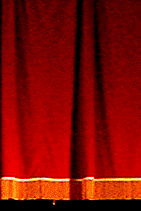 Mojtaba Mirtahmasb
Mojtaba MirtahmasbMojtaba Mirtahmasb was born in 1971 in the city of Kerman in Iran. He began and created his artistic life between the years of 1992-95 in University of Art (Mojtame’-e Daneshgāhiyeh Honar) in Tehran during preparation of his BA degree in Visual Art and Handicrafts. University of Art as the first intellectual and modern Art University after Islamic Revolution of Iran and war between Iran and Iraq was the best place for M.Mirtahmasb to meet the other artists in different fields of art, especially visual art such as photography, graphic design, painting, sculpturing, film making….
During 1992-95 he travelled a lot around Iran and did many little field research projects that his BA thesis is the result of these all. “Artistic Manifestations of Islamic Culture in the Mourning Accessories of Moharram” is the title of his BA thesis.
From 96 to 97 he directed 9 documentary-fiction films about the “Islamic Art and Material Culture of Iranian Shiism” under the global titles of the“Art Stories Series”, for introducing Iranian Traditional Handicrafts to Iranian young generations.
During 1998 till 2002 he produced and directed many short films about different subjects. Sedāy-e dovom (Back Vocal) and Sāz-e mokhālef (Off Beat) are his two recent films that show us his personal inquiry and thinking for the actual situation of Art, Youth and Gender in Iran. As he knows most of the artists and art producers in Iran, by make interviews and direct talking with these people specially women and young generations in Tehran, he tries to show us new visions and new versions of life in Iran.
M.Mirtahmasb is one of the rare young post-revolutionary generations and artists of Iran who has big names in his Cinematography’s C.V. for participating on their films, the names like Kambozia Partovi (Iran is my Home), Mohsen Makhmalbaf (Kandehar) and Sediq Barmak (Osama). He decided to stay and live in Iran and continue to make documentaries and fictions about the Art and Society in actual Iran.
Resource:
Anthropology.net





No comments:
Post a Comment